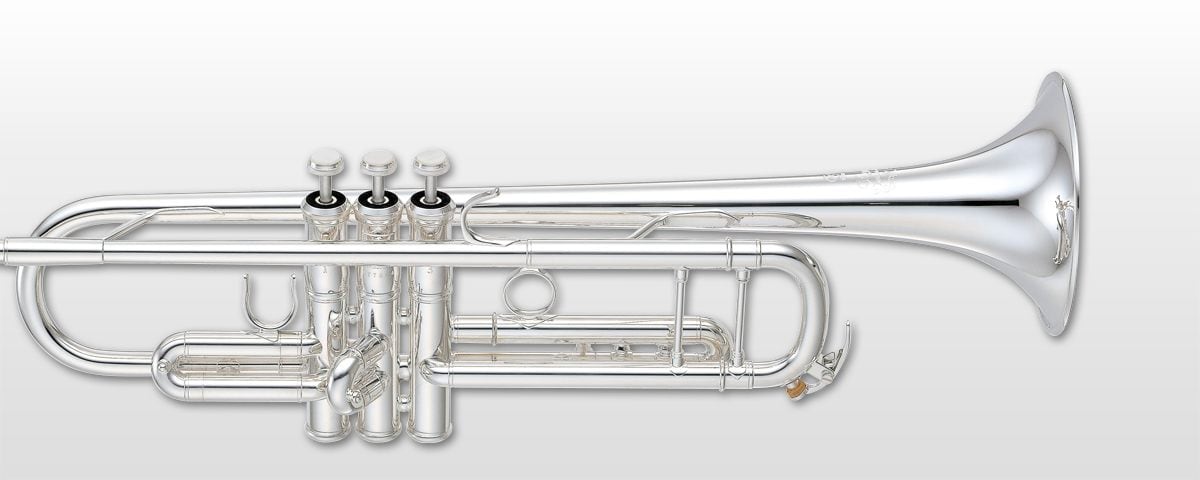YTR-9335NYS Nicht mehr im Verkauf
Entwickelt mit David Bilger
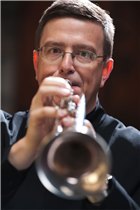
David Bilger
Hailed by the New York Times for his playing of “easy brilliance” and by the Washington Post for his “engaging legato touch,” David Bilger has held the position of principal trumpet of The Philadelphia Orchestra since 1995. Prior to joining the Orchestra, he held the same position with the Dallas Symphony.
As a soloist, Mr. Bilger has appeared with The Philadelphia Orchestra, the Dallas Symphony, the Houston Symphony, the Chamber Orchestra of Philadelphia, the Oakland Symphony, the Indianapolis Chamber Orchestra, Philharmonia Virtuosi of New York, and others. His solo appearances with The Philadelphia Orchestra include 2013 performances of Hummel’s Trumpet Concerto, a 2008 US Premiere of Herbert Willi’s “Eirene” for trumpet and orchestra as well as performances of the Tomasi Trumpet Concerto at Carnegie Hall, and on tour in North and South America in 1998; Haydn’s Trumpet Concerto in February 2003; Copland’s Quiet City in October 2004; and Bloch’s Proclamation in 2006. Mr. Bilger has performed recitals in New York, Washington, D.C., Cleveland, Los Angeles, Philadelphia, and other major American cities.
Mr. Bilger has appeared with the Chamber Music Society of Lincoln Center, with which he recorded Bach’s Second Brandenburg Concerto. Other chamber music appearances include Chamber Music Northwest, the New York Trumpet Ensemble, Saint Luke’s Chamber Ensemble, as well as guest appearances with the Canadian Brass and the Empire Brass. He released a recording of new electro-acoustic music for trumpet and synthesizers with composer Meg Bowles.
Mr. Bilger is currently on the music faculties The Curtis Institute of Music and Temple University, and was a former faculty member of the Hugh Hodgson School of Music at the University of Georgia. He has performed master classes at dozens of institutions, including the Juilliard School of Music, Indiana University, the University of Michigan, the Manhattan School of Music, and the Peabody Conservatory. He has also taught at the Pacific Music Festival and the National Orchestral Institute most recently at the Aspen Music Festival and School.
Mr. Bilger holds a Master of Music degree from the Juilliard School of Music and a Bachelor of Music degree from the University of Illinois.
Schallbecher-Design

The area where the bell meets the valves has been redesigned for optimum playing resistance and brilliant, distinctive tone. High note playability has been significantly improves as well.
The bell has a bottom seam that results in ideal balance with the new thinner valve casing and pistons.
Goldmessing Mundrohr

Durch die Verwendung eines dickeren Mundrohrs im Original Malone-Stil (MC2 / MT2) und einer leichteren Mundstück-Aufnahme haben wir einen verbesserten Klang und Ansprache sowie einen idealen Blaswiderstand erreicht. Der Fingerhaken ist sorgfältig positioniert, um nicht die Vibration des Mundrohrs zu stören. Auf der YTR- 9445 NYS wurde auch der Durchmesser des Mundrohr- Eingangs verändert, um einen optimalen Widerstand
Ventile
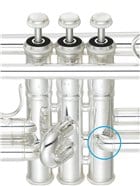
Die reduzierte Wandstärke und leichtere Ventile ermöglichen eine schnellere Ansprache. Veränderungen an der Form der Ventilknöpfe, den oberen und unteren Ventildeckeln sowie im Herstellungsprozess haben es ermöglicht, eine größere klangliche Tiefe zu erreichen und gleichzeitig die Projektion zu verbessern.
Neu entworfener Hauptstimmzug und Stütze
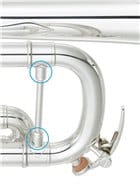
A conventional square crook is used (the Chicago model has a semi-square crook), while the main tuning brace has been extended and made heavier to achieve blowing resistance and vivid tonality that add up to brilliant presence in orchestral settings.
Wasserklappen Design
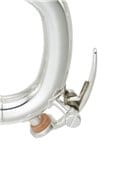
Die Gewichtsverteilung des Wasserklappenarmes und Sattels wurden ausbalanciert, um das Spielgefühl und die Resonanz in der hohen Lage zu verbessern.
Balance und Position der Stützen
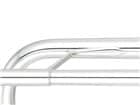
Die Form und die Position der Stützen ist geändert worden, um eine bessere Gewichtsverteilung zu erreichen, die für eine schnellere Ansprache und einen lebendigeren Ton mit einem starken klanglichen Kern führt.
Zug Stopper
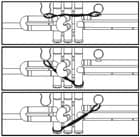
Der neue Zug-Stopper ist entwickelt worden, um das Herausfallen des 1. und 3. Ventilzuges zu verhindern. Es ist aus Silikon und greift daher auch nicht den Lack oder die Versilberung an. Aufgrund der Elastizität kann der Zug-Stopper während des Spiels am Instrument bleiben. Es gibt drei unterschiedliche Möglichkeiten, den Zug-Stopper zu verwenden. (Länge: 12 cm)
Case

The TRC-800E double case features a backpack-style design for ease of transport.

